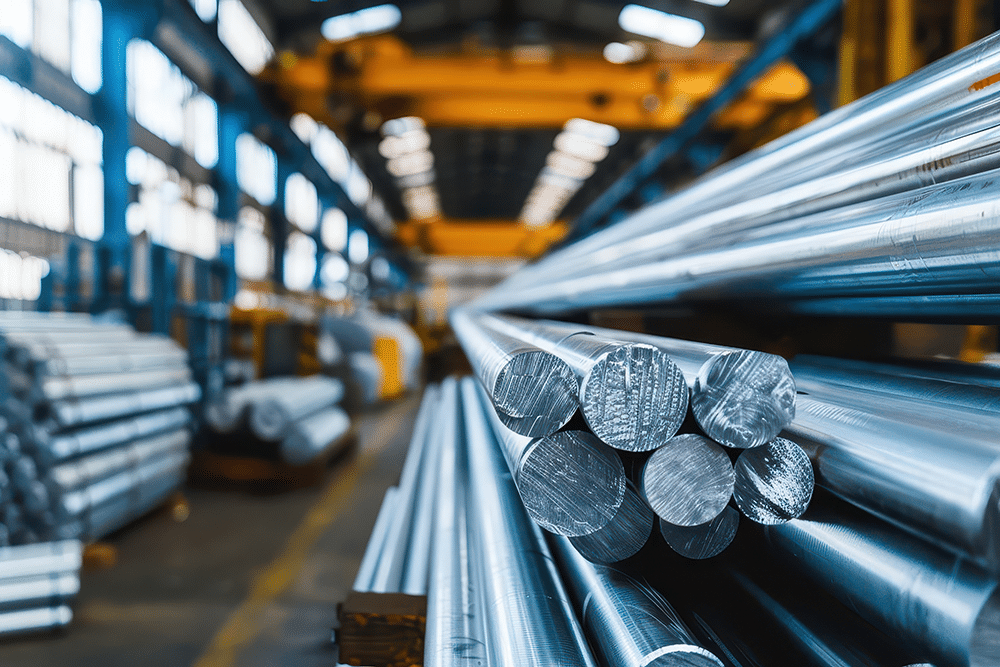GDP growth in China and the United States, the world’s two largest aluminum consumers, has slowed for months. Meanwhile, Europe and Japan continued to struggle with stagnant growth for much of 2024. Though still fluctuating within a range, aluminum prices have pushed toward the top in recent weeks. For this reason, many consumers continue to ask themselves, “Why has the price remained so strong?”
2024 Ended with Elevated Aluminum Prices
By late 2024, raw material costs dominated the aluminum story. In December, bauxite prices climbed while alumina prices hit unprecedented levels. For instance, PRA reported alumina prices at $805/mt FOB Australia and Yuan 5,850/mt ($819) in China, the highest since the Platts Alumina Index began in 2010.
The price surge largely stemmed from a tight alumina supply as bauxite shipment delays from Guinea and Brazil significantly disrupted the market. Production issues in Australia, including plant closures and Rio Tinto’s force majeure declaration due to gas shortages, added to the strain, as did Guinea’s renegotiation of supply contracts.

However, prices began to drop significantly by mid-January. The Platts assessment for Australian alumina fell to $570/mt, a 29% decline from December’s peak. Similarly, China’s domestic price dropped to Yuan 4,300/mt ($602), down 26% month over month. Also, MetalMiner’s forecasting models are predicting ample volatility for the aluminum market in the second half of 2025. What exactly, and how can you prepare accordingly to lessen the blow? Learn about MetalMiner Select.
Some Experts See the Market Shifting into Surplus
Although still elevated, alumina prices have also followed a downward trend, supported by improved supply and growing expectations of a surplus. Analysts currently predict that new facilities in Indonesia and India will shift the market from a deficit to a surplus, driving prices lower.
Indonesia recently accelerated its domestic mineral processing efforts, investing $941 million in a smelter-grade alumina refinery in West Kalimantan. Current estimates claim that the facility will produce 1 million metric tons of alumina annually.

Meanwhile, India is also expanding its alumina production. Reports indicate that Vedanta plans to build a plant with a 6-million-ton annual capacity by 2026. These expansions will contribute to a global alumina surplus, reducing raw material costs for aluminum smelters.
Though this new alumina supply will take time to materialize, speculative activity has already moved ahead of the curve. As raw material costs and alumina prices fade from focus, the market has shifted its attention to broader supply and demand dynamics.
MetalMiner’s monthly free MMI report gives monthly trends for 10 different metal areas, including copper, stainless, and aluminum prices. Sign up here.
Russia, China and the EU Energy Crisis
On the supply side, Russia’s Rusal recently announced plans to cut up to 500,000 metric tons of production due to high alumina costs and supply constraints. Since the invasion of Ukraine and the subsequent sanctions, Rusal has relied heavily on China for alumina.

However, China faces its own supply challenges as domestic primary aluminum production nears its 45-million-metric-ton annual capacity cap. That cap will limit China’s ability to remain the world’s low-cost supplier of semi-finished products. Indeed, this factor likely influenced Beijing’s decision to remove the export rebate on semis late last year.
Meanwhile, European demand remains weak, with significant capacity remaining offline due to the region’s energy crisis. Even if the war in Ukraine ends, Europe will likely struggle to regain access to low-cost Russian fossil fuels for the foreseeable future.
Gain the knowledge you need to save money and stay ahead of shifts in aluminum prices with MetalMiner’s Weekly Newsletter.
Demand Continues to Outpace Supply
Despite a slowing global economy, a combination of steady demand growth and limited supply-side flexibility has kept aluminum prices elevated. In particular, the Shanghai market continues to drive prices higher, supported by growing domestic demand for solar cells and EVs. As a result, the global aluminum market is shifting from a surplus to a deficit, with analysts expecting a shortfall of around 400,000 metric tons in 2025.
While LME stocks have lost their reliability as a supply indicator since the financial crisis, their steady decline reinforces the idea that demand continues to outpace supply, even as global GDP growth weakens.




